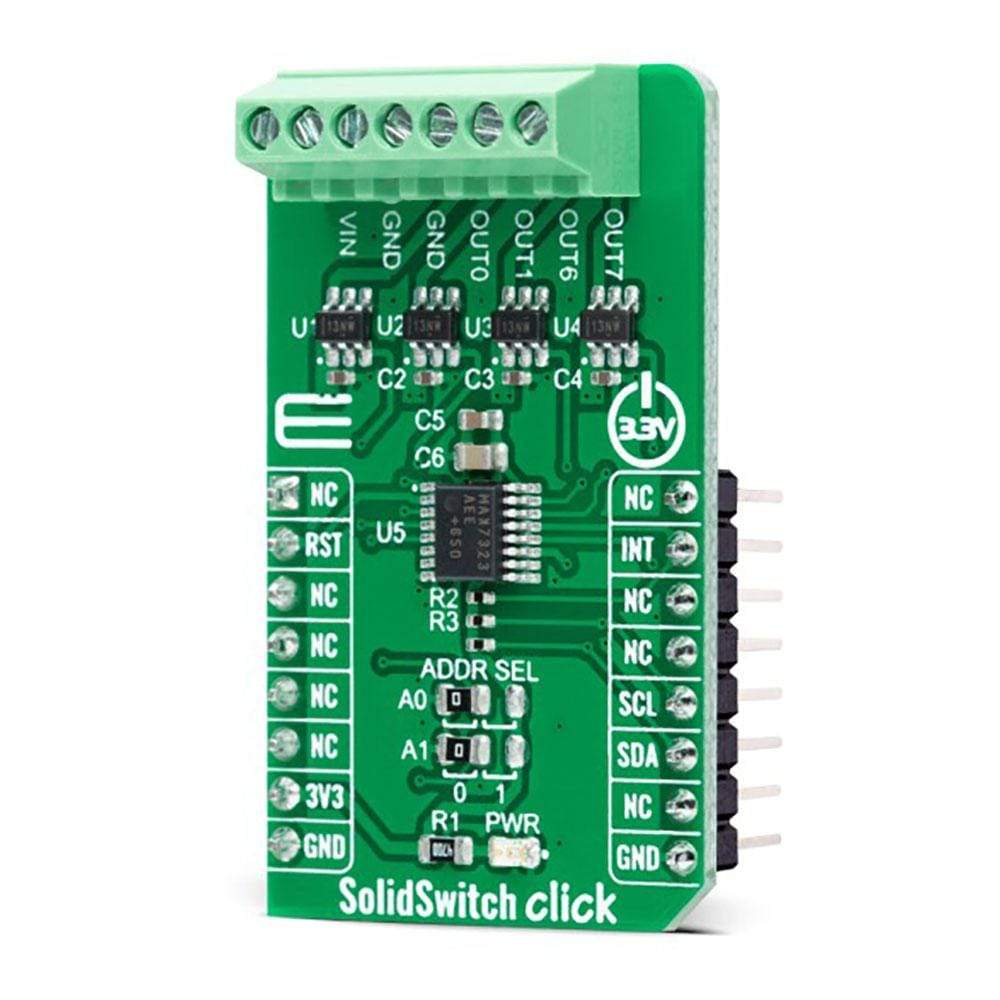
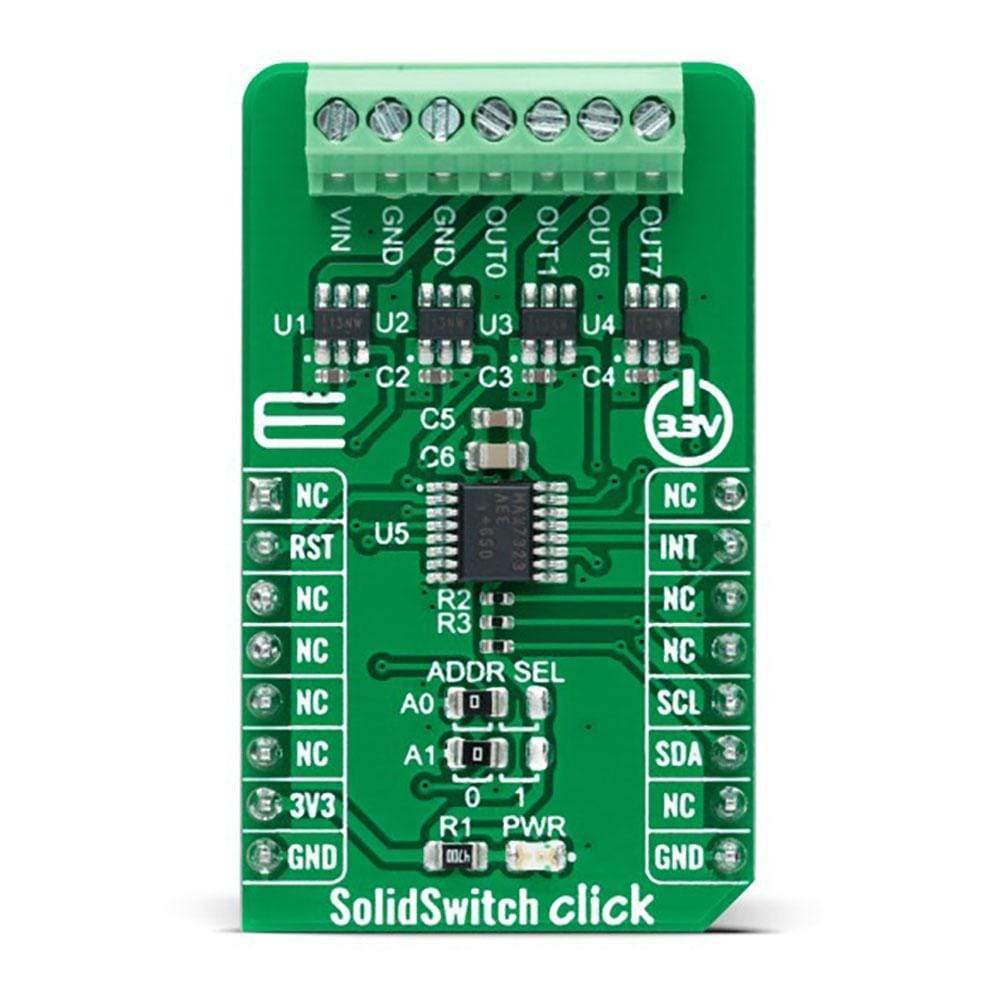
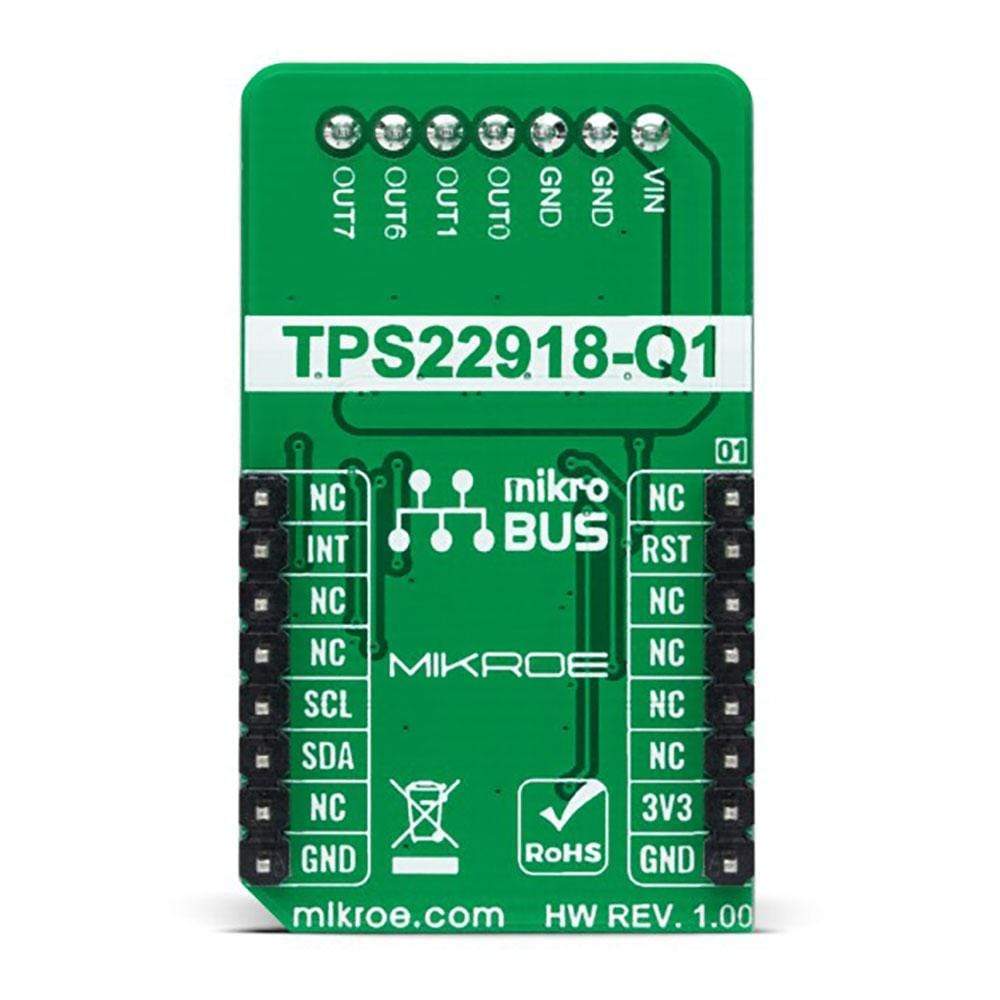
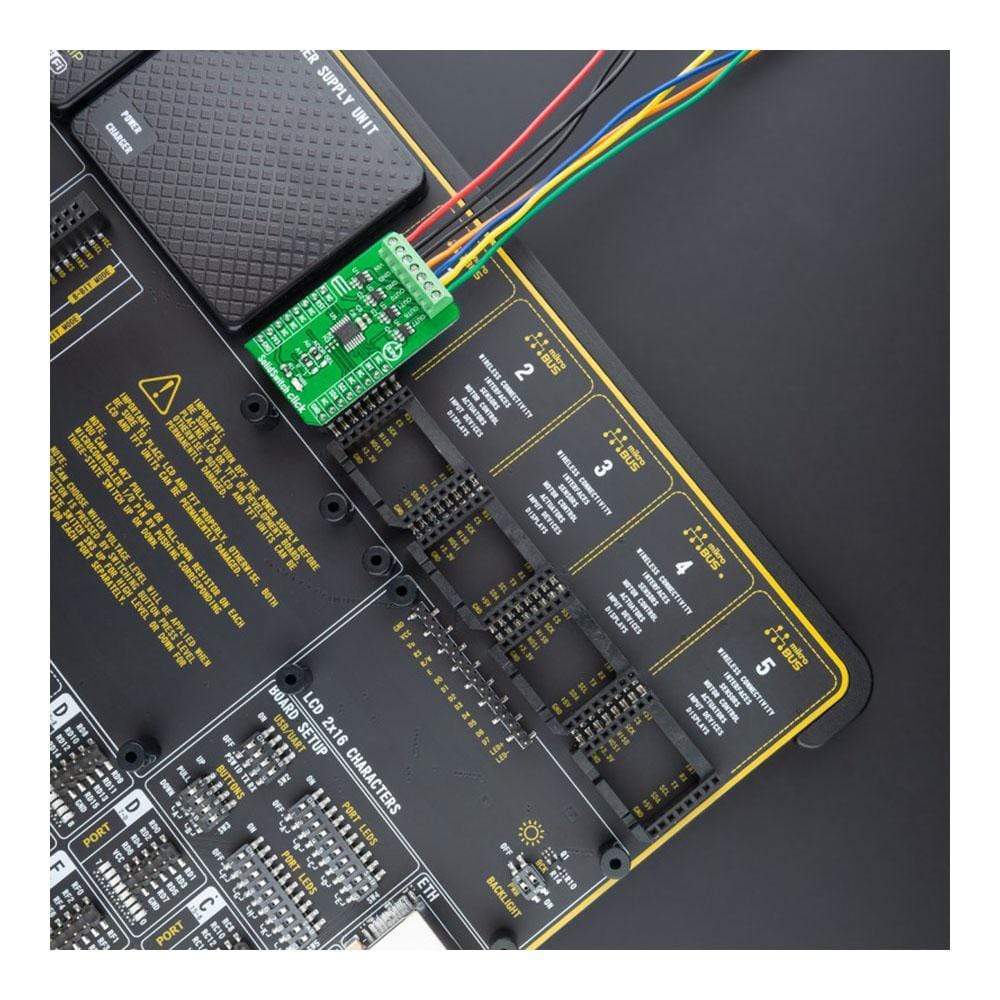
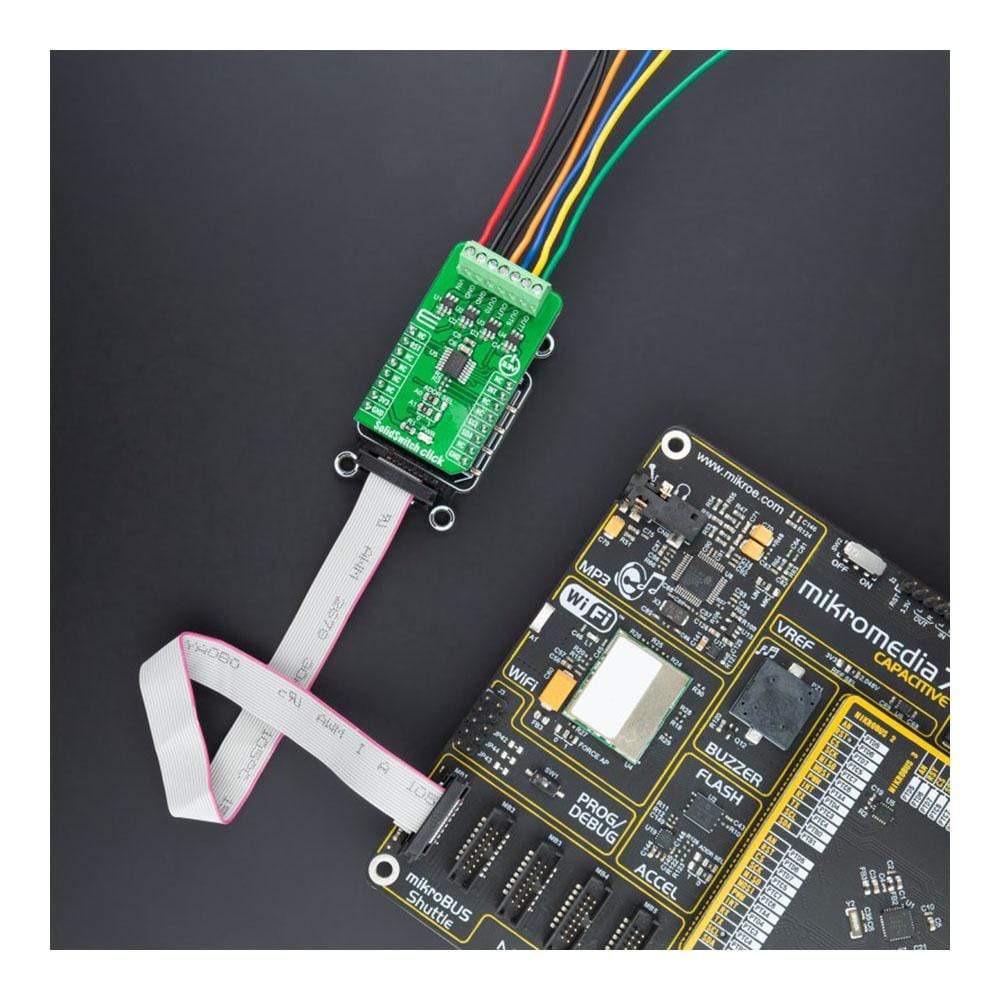
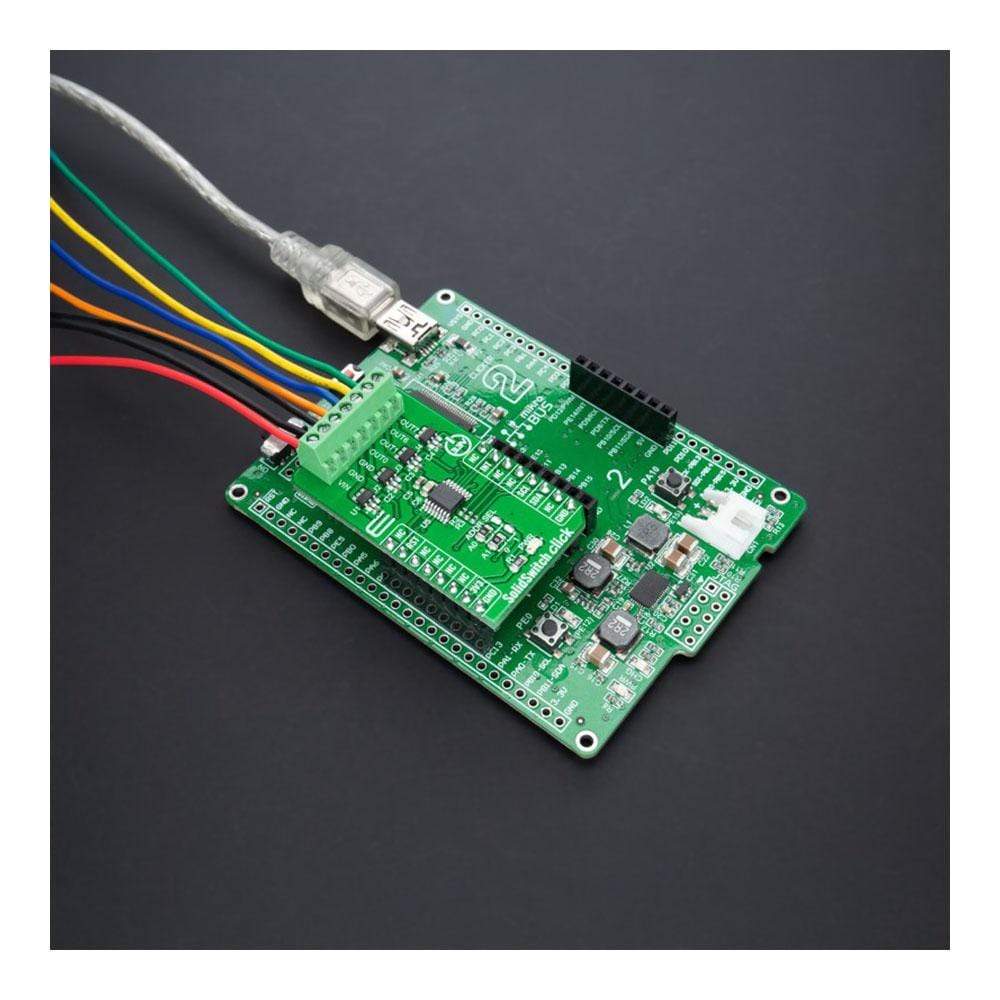
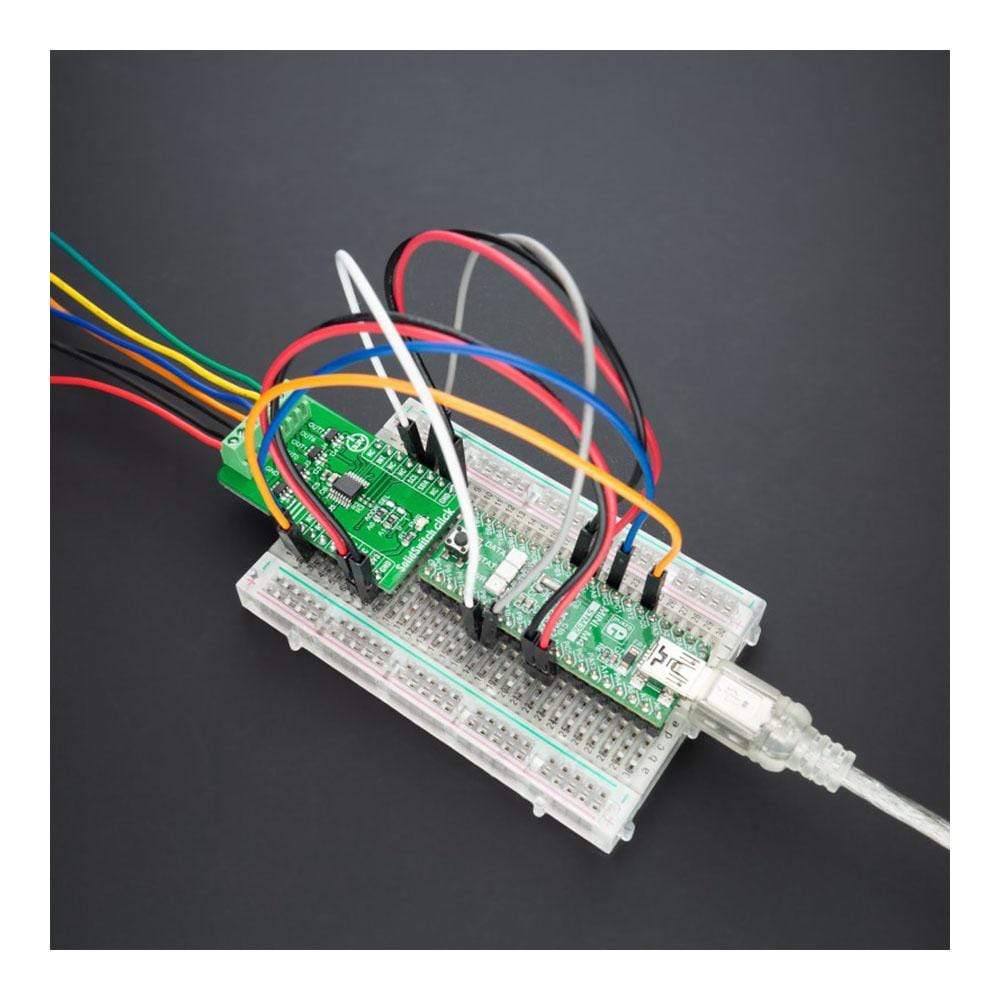
Overview
The SolidSwitch Click Board™ is a compact add-on board that contains load switch devices. This board features the TPS22918, four single-channel load switches from Texas Instruments. Every switch includes an N-channel MOSFET that operates over an input voltage range up to 5.5V and can support a maximum continuous current of 2 A. The switches are controlled by an ON/OFF input, performed by MAX7323, an I2C configurable port expander capable of interfacing directly with low-voltage control signals. This Click Board™ is suitable for industrial systems, set-top boxes, electronic point of scale, and various other applications.
The SolidSwitch Click Board™ is supported by a mikroSDK compliant library, which includes functions that simplify software development. This Click Board™ comes as a fully tested product, ready to be used on a system equipped with the mikroBUS™ socket.
Downloads
Das SolidSwitch Click Board™ ist eine kompakte Zusatzplatine, die Lastschaltergeräte enthält. Diese Platine verfügt über den TPS22918, vier einkanalige Lastschalter von Texas Instruments. Jeder Schalter enthält einen N-Kanal-MOSFET, der über einen Eingangsspannungsbereich von bis zu 5,5 V betrieben werden kann und einen maximalen Dauerstrom von 2 A unterstützen kann. Die Schalter werden über einen EIN/AUS-Eingang gesteuert, der von MAX7323 ausgeführt wird, einem I2C-konfigurierbaren Port-Expander, der direkt mit Niederspannungs-Steuersignalen verbunden werden kann. Dieses Click Board™ ist für Industriesysteme, Set-Top-Boxen, elektronische Waagen und verschiedene andere Anwendungen geeignet.
Das SolidSwitch Click Board™ wird durch eine mikroSDK-kompatible Bibliothek unterstützt, die Funktionen enthält, die die Softwareentwicklung vereinfachen. Dieses Click Board™ wird als vollständig getestetes Produkt geliefert und ist bereit für den Einsatz auf einem System, das mit der mikroBUS™-Buchse ausgestattet ist.
| General Information | |
|---|---|
Part Number (SKU) |
MIKROE-4569
|
Manufacturer |
|
| Physical and Mechanical | |
Weight |
0.02 kg
|
| Other | |
Country of Origin |
|
HS Code Customs Tariff code
|
|
EAN |
8606027382284
|
Warranty |
|
Frequently Asked Questions
Have a Question?
Be the first to ask a question about this.







